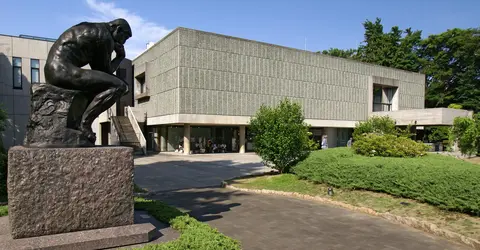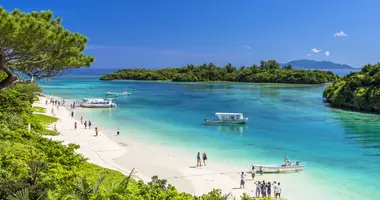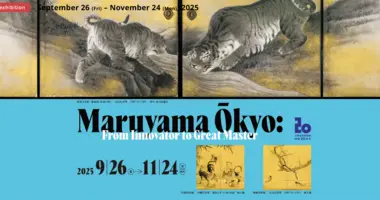The National Museum of Western Art 国立西洋美術館
- Published on : 13/04/2018
- by : J.L.
- Youtube
Art-chitecture museum
A must-see museum for lovers of classic and modern art, showcasing several centuries of European art and even architecture thanks to the building's design by Le Corbusier, which made it the first UNESCO-listed site in Tokyo.

The National Museum of Western Art in Tokyo.
wikimedia Commons
The biggest names in Art
The National Museum of Western Art in Tokyo offers a very large collection of works from the Renaissance to the 20th century , for an educational journey through the centuries.
Starting with Le Tintoret, Vasari and Veronese from the 14th century. Then Rubens, De La Tour and Fragonard in the 17th/ 18th centuries to arrive in the 19th century with Delacroix, Corot, Courbet, Manet and Rodin. Monet, Renoir, Van Gogh, Gauguin and Cézanne illustrate the beginning of the 20th century, to finish with Miro, Pollock and Dubuffet.
Each year, three major temporary exhibitions on selected themes are presented to the public, with loans from other collections.
To read: The National Museum of Fine Arts
Le Corbusier in the heart of Tokyo
The building of this museum is itself a work because it was designed by the most famous architect of the 20th century, Le Corbusier , and was therefore classified in 2016 as a UNESCO World Cultural Heritage Site. Built in 1959, Le Corbusier was at the top of his game. A figurehead of modernism, this museum benefited from all its innovative ideas, assembly on stilts, large headband windows, large spaces in the center of the staircase overlooking all the rooms. This museum influenced a whole generation of Japanese designers and architects who flourished by following these precepts.
See also: The most beautiful buildings in Tokyo
The tribulations of an impressive collection
The appreciable collection of works today at the Museum of Western Art comes from that of Matsukata Kôjirô (1865-1950) who was above all a great lover of French art. This businessman never stopped buying and collecting works at the beginning of the 20th century across Europe. He would thus have amassed more than 10,000 works in a few years , with the idea of creating a museum in Japan to show young Japanese artists the best of Western art with real works. From 1915, Matsukata Kôjirô began his project, with the help of the British artist Frank Brangwyn. After having acquired all these works, several events will unfortunately affect this fabulous collection.
In 1927, a serious financial crisis brutally hit Japan , it was the "Showâ financial crisis", like a foretaste of the Great World Depression of the 1930s. Matsukata Kôjirô was forced to part with many works, selling them to avoid ruin. Many works he had bought in Europe are stored in a warehouse in London , a fire during the bombings of this city at the start of the Second World War, in 1939, caused him to suddenly lose everything, and destroyed exceptional paintings by prestigious artists .
As a result of this war, France had 428 works seized, as property of an enemy country (Japan was part of the Axis with Germany and Italy). Originally kept at the Rodin Museum by its director, Léon Benédit, a friend of Kôjirô, it will be necessary for the Treaty of San Francisco to settle the matter for France to return a large part of the works requested by the Japanese government. 375 works will return to Japan , provided that it builds a special museum to exhibit them.
Today, the Museum of Western Art lists more than 5,500 works ranging from the 14th to the 20th century .
In 2017, a work belonging to the original collection of Matsukata Kôjirô was found in the collections of the Louvre Museum. And not just any, since it was one of Claude Monet's Water Lilies (1916) that the Japanese collector had bought directly from him. It is currently being restored at the National Museum of Western Art to be exhibited there soon.
Other museums in Ueno:
Address, timetable & access
Address
Timetable
JR Ueno Station 2 minutes walk, in Ueno Park.Price
500yen Adult250yen student from 18 years old.Access
From 9.30 a.m. to 5.30 p.m. on Tuesday, Wednesday, Thursday and Sunday. From 9.30 a.m. to 8 p.m. on Friday and Saturday.



































